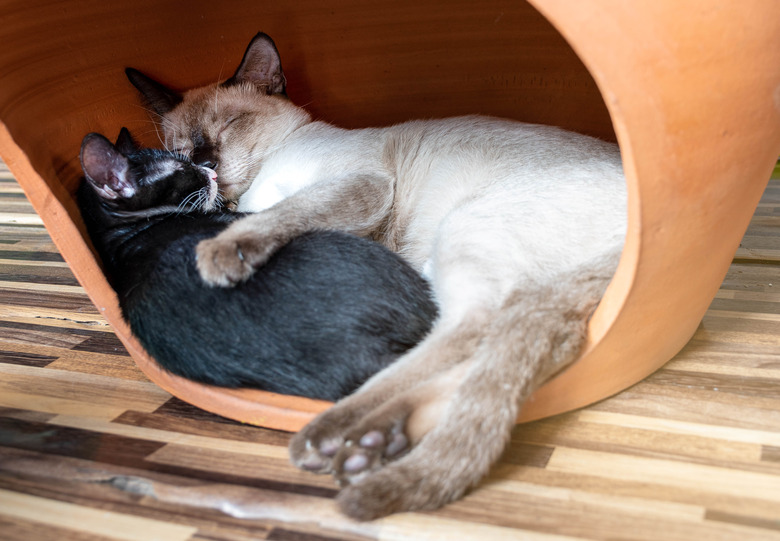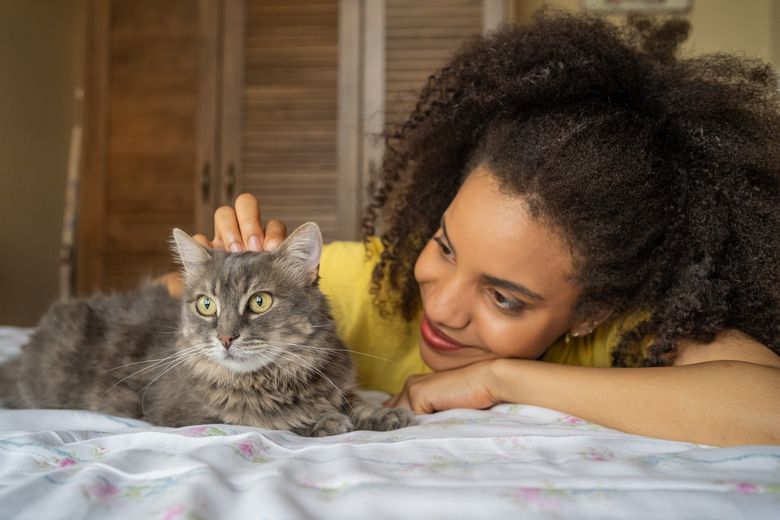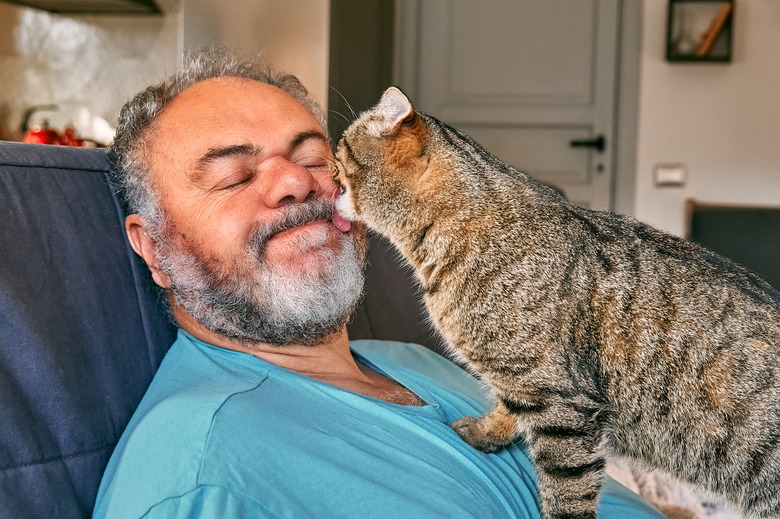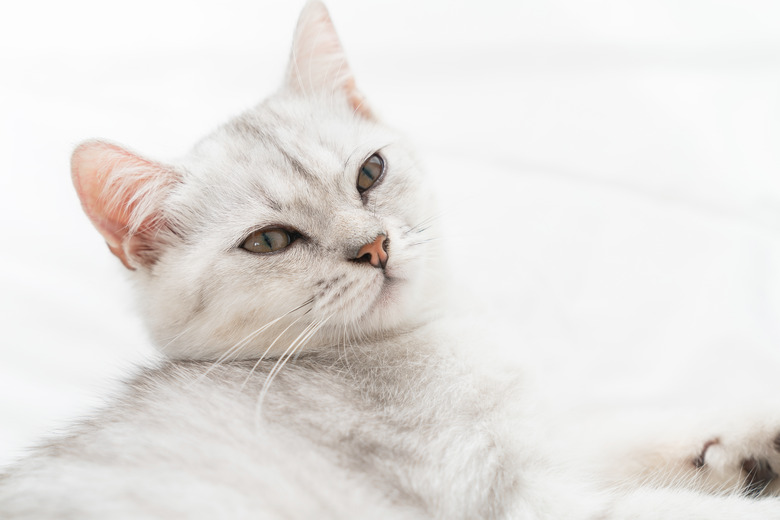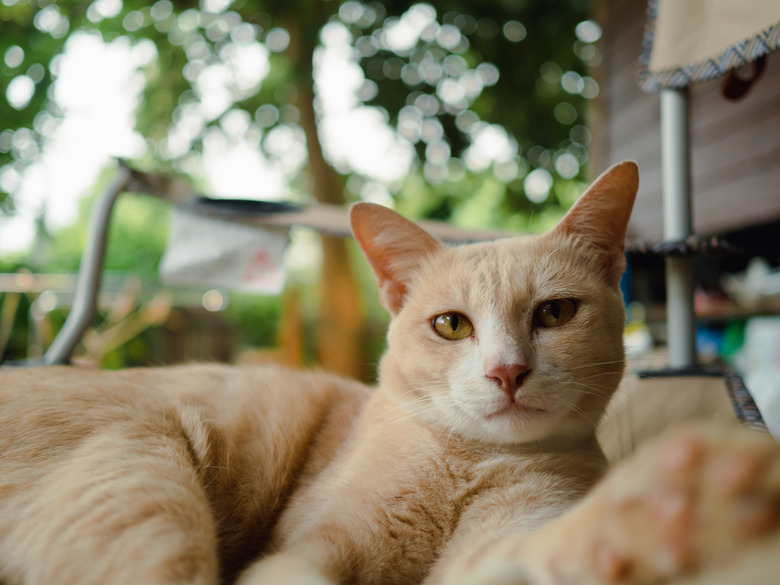Amoxicillin To Treat UTIs In Cats
Amoxicillin is an antibiotic that is regularly used in veterinary medicine due to its accessibility and low incidence of side effects. Your veterinarian might dispense amoxicillin for your cat's UTI (urinary tract infection) or other type of soft-tissue bacterial infection. The drug is available in a generic and a brand name. A popular veterinary version of amoxicillin for cats and dogs is manufactured by Zoetis under the brand names Amoxi-Tabs and Amoxi-Drops. It's best to avoid human liquid formulations like Amoxil because they contain sweeteners and bubble-gum flavor.
What is amoxicillin for cats?
What is amoxicillin for cats?
Amoxicillin is a broad-spectrum antibiotic. Though it is used in cats, products like Amoxi-Tabs and Amoxi-Drops are also labeled for use in dogs. In both of these species, amoxicillin is used to treat skin infections, wounds (such as abscesses), respiratory infections, ear infections, and urinary tract infections.
Amoxicillin is similar to ampicillin, and both are in the penicillin class of antibiotics. While amoxicillin is useful against a variety of bacterial infections, it's not effective against all. Some infections won't fully respond to amoxicillin but will respond to a related drug called Clavamox. Clavamox contains amoxicillin and an ingredient called clavulanic acid. This second drug broadens the spectrum of amoxicillin by preventing bacteria from destroying it.
How does amoxicillin treat urinary tract infections in cats?
How does amoxicillin treat urinary tract infections in cats?
Amoxicillin treats UTIs in cats by interfering with the production of a bacterium's cell wall, thereby killing it. Because of this, it's used to treat a variety of infections caused by gram-negative and gram-positive bacteria. Some of these pathogens are E. coli, Streptococcus species, and Staphylococcus aureus.
Not all urinary tract infections will respond to amoxicillin. The best way to determine what antibiotic a UTI will respond to is with a test called a urine culture and sensitivity, which your veterinarian submits to a laboratory.
Symptoms of urinary tract infections in cats
Symptoms of urinary tract infections in cats
If you notice your cat's urination habits have changed, they could have a urinary tract infection, or they could have sterile cystitis. Sterile cystitis means the lining of the bladder is inflamed, but there is no infection present. You won't be able to tell the difference by just observing your cat. Your veterinarian will have to run tests to determine which issue your cat has.
Symptoms of urinary tract infections in cats are:
- Urinating outside of the litter box
- Straining to urinate
- Urinating small, frequent amounts
- Red-tinged urine
- Repeatedly licking the genital area
UTIs cause a burning or irritating feeling in your cat's urethra and will make your cat feel like they have to urinate frequently. If your cat has some or all of the signs of a UTI, they need to have an exam.
Your veterinarian will also need a urine sample for testing. When scheduling your cat's appointment, ask if they prefer you to try and collect a sample at home or if they prefer to collect urine from your cat at the clinic. Your veterinarian may want to cleanly collect urine using a simple technique called cystocentesis. This involves using a needle and syringe and allows the sample to not be contaminated by bacteria from the litter box or floor.
Amoxicillin dosage for cat's UTI
Amoxicillin dosage for cat's UTI
Amoxicillin is available in both a tablet form as well as an oral liquid suspension. For cats, it is usually prescribed in the range of 5 to 10 milligrams per pound of body weight, given every eight to 12 hours depending on the severity of the infection. Your veterinarian will determine the dose of amoxicillin that your cat needs and how long your pet needs to be treated. Due to the worldwide problem of antibiotic resistance in people and animals, antibiotics should only be administered to cats and dogs on the order of a veterinarian.
How to administer amoxicillin for cat's UTI
Amoxicillin is given to cats by mouth, usually as a tablet or liquid. The liquid suspension comes with a dropper attached to the inside of the cap. The dropper has markings for accurate measurement up to 1 milliliter.
If you're using the liquid, shake the bottle well before drawing up your cat's dose. To reduce the chance of gastrointestinal upset, it's best if your cat has some food in their stomach first. After pulling up the liquid in the dropper, insert just the end of the dropper at the corner of your cat's mouth and squeeze the bulb. It helps to use your other hand to either hold their head or to gently hold their scruff. You might need to solicit help from a friend or family member to hold your cat so you don't get clawed.
For pills, you'll have to place the pill as far back on the tongue as possible. It helps to lubricate it with something like hairball gel or canned food. Avoid pilling cats "dry" because it can sit in their throat for a while, which is uncomfortable.
How to store amoxicillin for cats
Amoxicillin tablets should be stored at room temperature (59 to 86℉). The liquid should be stored in the refrigerator. If you have a bottle of the liquid that hasn't yet been mixed with water, store that at room temperature. After the liquid has been mixed, any remaining amount should be thrown away after 14 days.
Potential side effects of amoxicillin for cats
Potential side effects of amoxicillin for cats
As with any medication, side effects are possible. Gastrointestinal upset is a common side effect in cats, and the chances of this can be reduced (though not always completely avoided) by giving the medication after your cat has eaten.
Common side effects include:
- Decreased appetite
- Vomiting
- Diarrhea
Allergic reactions can also occur, resulting in facial swelling, fever, trouble breathing, or rashes. If your pet doesn't tolerate amoxicillin, less serious side effects often improve within 24 hours of discontinuing it. But if your cat still isn't eating well, talk with your veterinarian immediately. Even a day or two of decreased appetite can cause a more serious condition called hepatic lipidosis. This is more likely to occur in overweight cats.
Possible drug interactions with amoxicillin
If you give your pet any medications, supplements, or homeopathic products, be sure to let your veterinarian know. A variety of prescription products are known to have negative interactions with amoxicillin. Some of these include:
- Tetracyclines
- Sulfonamides
- Trimethoprim
- Macrolides
- Lincosamides, like clindamycin
- Methotrexate
The bottom line
The bottom line
Amoxicillin is a broad-spectrum antibiotic. If your cat is hard to pill, the good news is that amoxicillin also comes in an oral suspension. It is often used to treat bacterial infections in cats, such as urinary tract infections (UTIs), wounds, and respiratory infections. It's generally well tolerated, especially if given after food, but some cats may experience digestive upset from amoxicillin. Talk to your veterinarian right away if your cat's health, particularly their appetite, declines at all after starting this medication.
